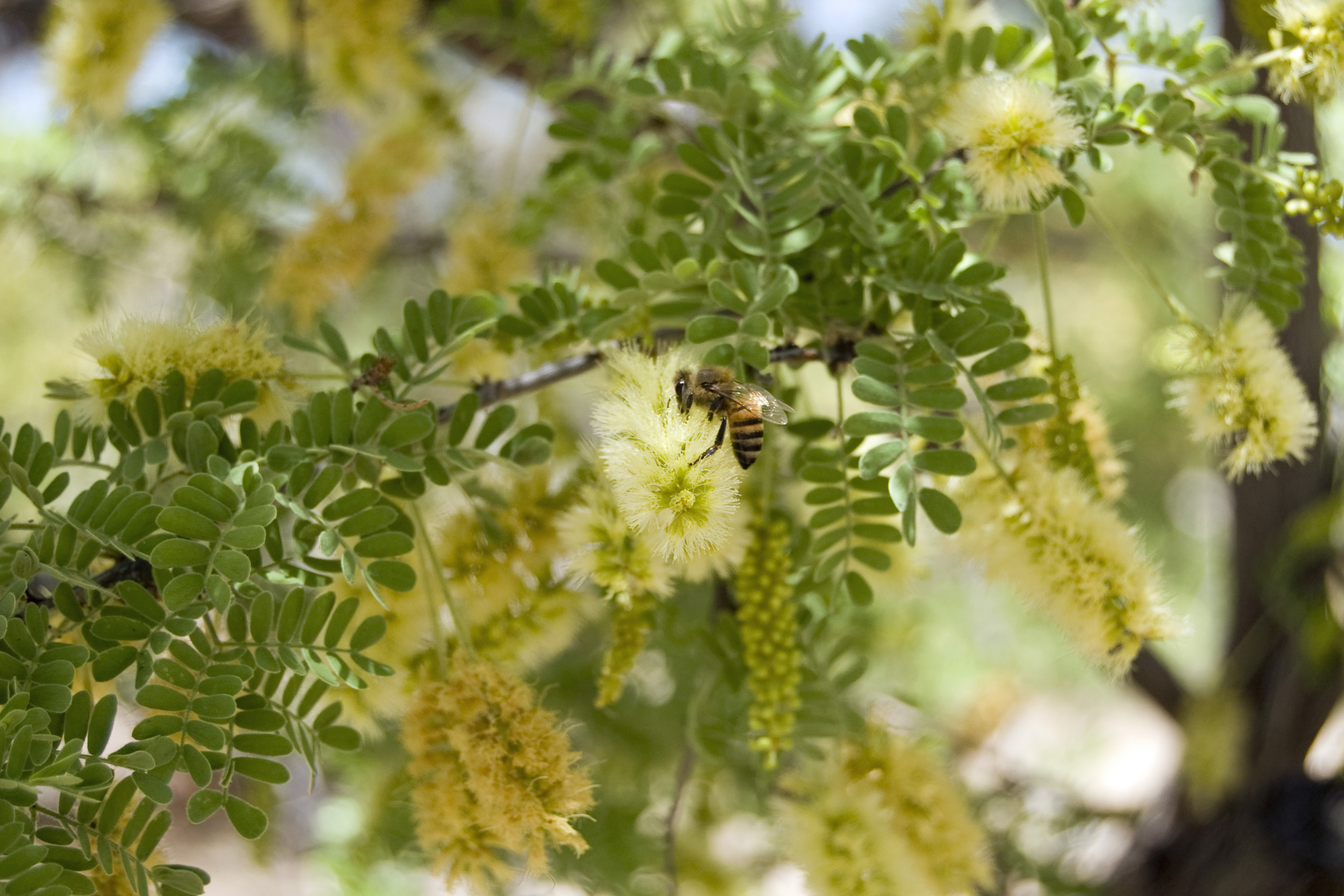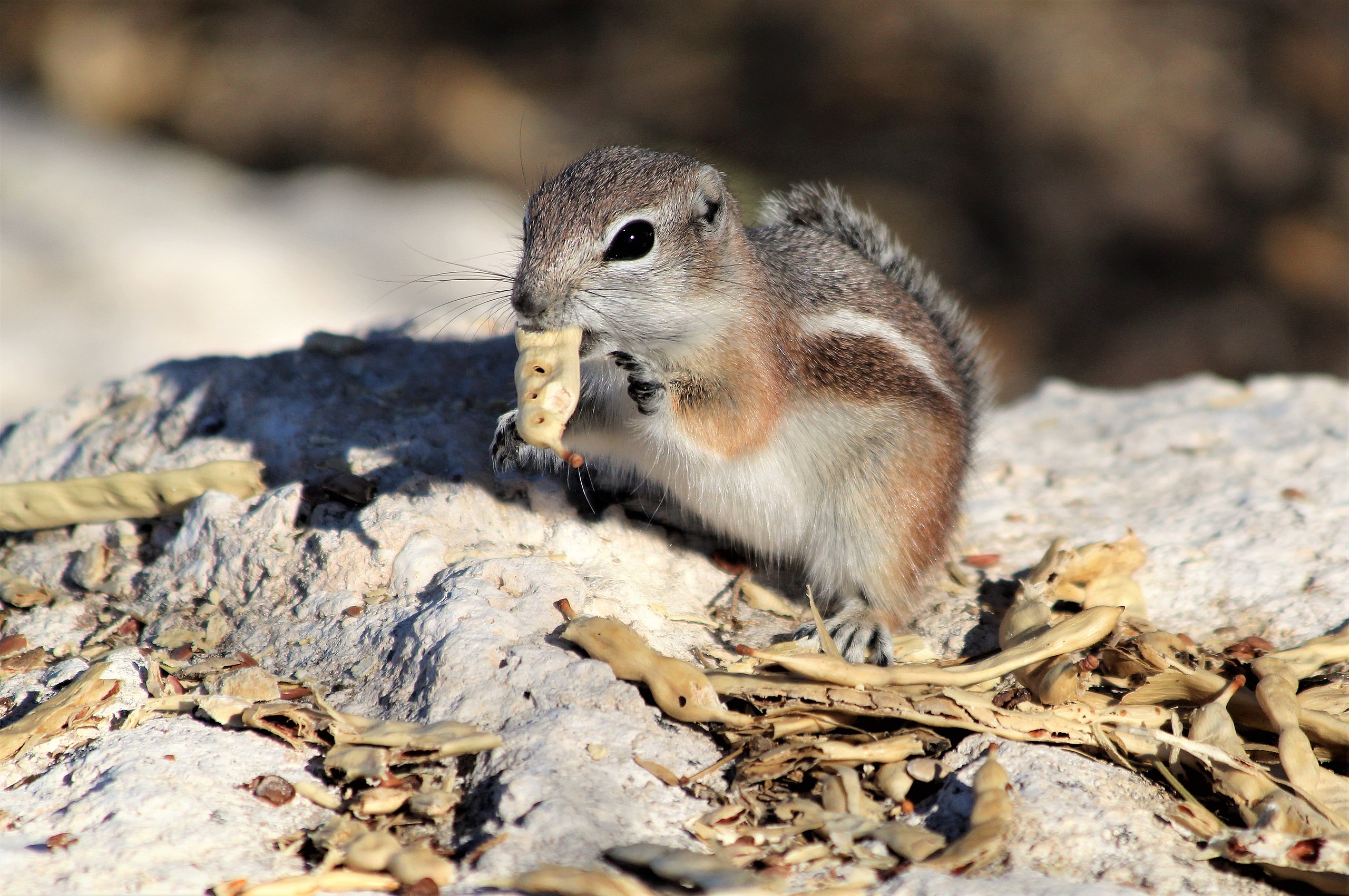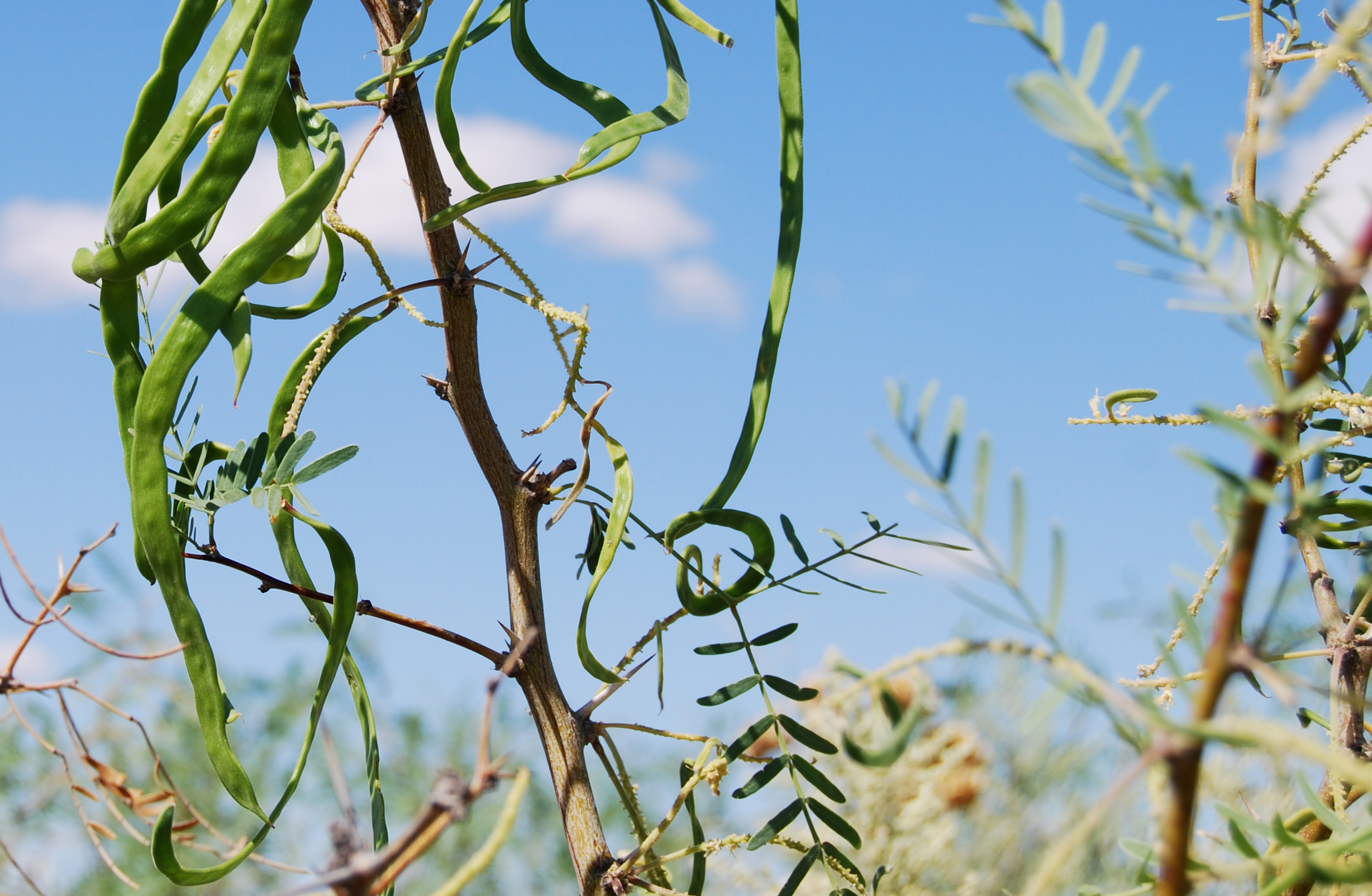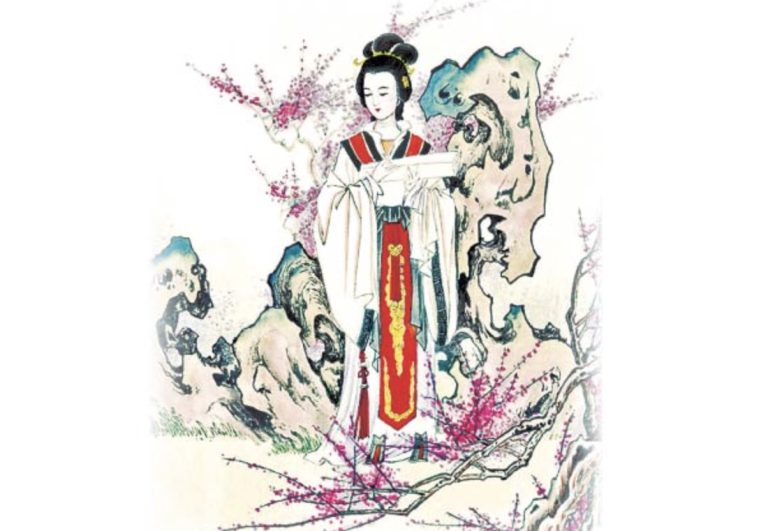While many of us are familiar with mesquite as a distinct barbeque flavor, or the charcoal that lends such a flavor, the mesquite tree has much more to offer. Called everything from the “tree of life” to “the devil with roots,” mesquite has played an important role in the life and culture of those in the southwestern United States and Mexico for centuries, if not millennia.
Botanical facts
Mesquite is a genus (Prosopis) that includes about 40 different species of deciduous small trees or large shrubs. Native to warm, arid places like Africa, India, the Middle East, desert regions of the US and Mexico, mesquite is known for its adaptability to poor conditions. Fossil records of mesquite date back to the Pliocene era, circa 3300 years ago.
As members of the Leguminosae family, all mesquite species produce bean-like pods. The pods of our native honey mesquite (Prosopis glandulosa) are especially sweet and have long been used for human consumption.
Its cousin Prosopis juliflora has pods that are unpalatable to humans but have served as fodder for livestock. This species was introduced around the world and has since become invasive in Asia, Africa, India and the Arabian Peninsula.
Mesquite spread widely through the arid southwest after Spanish explorers introduced cattle to the Americas in the 1500s.
Invasive qualities
Success
You are now signed up for our newsletter
Success
Check your email to complete sign up
Because mesquite is highly adapted for survival, it can out-perform many native plants, disrupting the ecological balance. When conditions are poor, mesquite’s extensive root system searches out any available water, reaching depths nearly 200 feet and going out 50 feet beyond the circumference of the crown. Its waxy, compound, pinnate leaves also prevent water loss through transpiration.
The trees can live for centuries, as demonstrated by one specimen in Bahrain that is believed to be 400 years old.
Mesquite spreads readily by seed, as many animals — including coyotes — enjoy the fallen, ripe pods; and cut trees can also grow back from the stump. A guest that’s easy to invite but hard to get rid of, the plant is detested by farmers and ranchers around the world. An estimated 30 percent, or 51 million acres, of Texas alone is populated with mesquite.
Since 1946, attempts at eradicating mesquite in Texas have included chemical sprays of the leaf and base, and manual removal. Despite its bad reputation among growers, mesquite has many favorable properties that have traditionally been highly valued.

Ancestral uses
In many ways, mesquite is a symbol of Mexican culture. The indigenous people of Mexico, Southwestern US and California used almost every part of the tree in their daily lives, with applications ranging from food, medicine and clothing, to shelter, fuel, tools, and more. Honey mesquite was the most widely used species, mainly due to its edible, sweet pods. The Pima Indians dubbed mesquite “the tree of life,” for its reliable sustenance under harsh conditions.
While it is unclear when mesquite became a dietary staple and cultural amenity, Native Americans first populated the Southwest around 7,000 BCE, with ancestral Pueblos farming the area as early as 2,000 BCE. An important agricultural feature of all legumes is that they fix nitrogen in the soil, enabling it to be used as a nutrient.
Mesquite wood
Mesquite wood is dense and disease-resistant. It has been used in the construction of architecture, fencing, furniture and tools. The Spaniards used mesquite for ship building.
The roots of this hardwood provided valuable fuel for fires, both indoors and out. Even today, mesquite charcoal is a favorite among grillers. This natural product burns long, is free of additives and binders, and adds a distinct sweet flavor with its smoke.

Mesquite pods
Unlike the common bean, where we mainly consume the seed, it is the pod of mesquite that provides the bulk of its nutrition. Traditionally, the whole pods were ground into a coarse, flavorful meal that was rich in protein and fiber. Indigenous people used the meal to make an uncooked gruel or a no-bake cake that could be sun-dried for storage. It could also be mixed with water to produce a refreshing beverage known as atole, which might then be fermented for preservation.
Some indigenous cultures ground the seeds separately to make a flour called pinole, which could be baked into bread. The tough seeds could also be roasted to make “cowboy coffee,” a bold-flavored brew that is similar in bitterness to the real thing, without the caffeine — although it is said to be a mild stimulant nonetheless.
Mesquite bark and sap
The inner bark of mesquite was used to make baskets, or pounded soft to make a flexible material suitable for clothing and diapers. Medicinally, it was boiled to make a liquid laxative or emetic.
The sticky sap, or gum, was used to mend broken pottery, glue on arrow points, and waterproof basket-jars. The sap was also valued for its healing and antiseptic properties. Like the bark, it was used to promote digestion and dispel poisons, but it was also used for treating everything from hemorrhoids and sore throats to wounds. Used as a hair dye, it could simultaneously serve as a deterrent for lice.

Mesquite leaves and thorns
Mesquite leaves, too, were used for soothing a variety of maladies. A lotion made from the leaves could be issued as an eyewash to reduce infection or irritation. Headaches were soothed with a leaf poultice applied to the forehead, and toothaches were relieved by chewing the leaves. Burns, chapped skin and other skin irritations were also treated with mesquite leaves.
On top of that, the leaves could be used to whiten clothes; while the sharp thorns were made into needles and awls.
Medicinal uses for mesquite
Modern science has validated much of the indigenous wisdom by studying and verifying the medicinal properties of mesquite. It has antimicrobial and astringent properties which can serve as a disinfectant, help fight infection, heal wounds and regulate gastrointestinal functions.
Mesquite also contains quercetin, a powerful anti-inflammatory that helps reduce the risk of many diseases, including diabetes. Due to its low glycemic index of 25, replacing regular flour (GI 75) with mesquite may actually help regulate blood sugar.
Mesquite also has the ability to enhance immunity, thanks to its lysine content. Lysine is an essential amino acid that aids in the production of antibodies, which defend the body against pathogens.
Nutritionally, whole ground pods are high in protein and fiber, and provide many other important minerals and nutrients — like calcium, iron, magnesium, potassium, serotonin, tryptamine and zinc.
Desert dining with mesquite
If you live in the Southwest, you likely have many opportunities to collect mesquite pods. Honey mesquite trees flower and fruit multiple times between June and October, producing an abundance of long green pods that ripen to a soft yellow or tan. The pods that have streaks of purple are said to be the sweetest. Other mesquite species with edible pods include Screwbean Mesquite (Prosopis glandulosa) and Velvet Mesquite (Prosopis velutina).
Always harvest your pods from the tree rather than collecting them from the ground. Fallen pods, and even pods that have been rained on, are likely to be infected with a mold called aflatoxin, which can cause illness — especially for those with a compromised immune system. So be sure to pick your pods before the rain comes.
Ripe pods should be dried in the sun for at least a week, or in a warm — not hot — oven, until they are crunchy and brittle, after which they can be ground into a meal. The indigenous people traditionally used a metate, which is similar to a mortar and pestle, while early settlers were more likely to use a hammer mill for grinding the pods into a powder. Today we have blenders, food processors, and coffee grinders that will do the trick.
While the pod breaks down readily, the seeds are tough and stubborn. If you sift them out, you’ll have both a fine flour from the pods, and a coarse collection of seeds. The seeds can be roasted — medium, dark, or extra dark as per your preference — and then ground to brew coffee or tea.
While mesquite meal was not traditionally baked, it can be used for that purpose. It has a strong, sweet flavor and is best mixed with more neutral flours, at a ratio of 1:3 or 1:4 to make pancakes, cornbreads, tortillas and cookies. Because it is sweet, the flour can even be used as a healthy alternative to brown sugar.
Although mesquite can be used like wheat flour, it is naturally gluten-free.
The whole pods can also be boiled to make jelly or “mesquite molasses.”
If you don’t have access to fresh mesquite, you can purchase genuine mesquite flour online from local sources like cappadonaranch.com, or larger online distributors. For an authentic taste of the southwest, try the following recipes adapted from desertusa.com:
Mesquite Flour Tortillas
Mix the dry ingredients together.
Use a wooden spoon to stir in oil, then water, making a ball.
Knead for two minutes, then cover and let it rest for 20 minutes.
Divide into 12 balls, then flatten into 1/8″ disks.
Cook in a dry skillet at medium temperature.
After about two minutes they should be slightly browned. Turn and cook the other side for one minute.
Unused tortillas can be stored in a plastic bag.
Mesquite molasses
- 4 quarts water
- 1 lb mesquite pods (washed)
Place water and pods in a covered crock pot and cook over low heat for 12 hours.
Strain, then reduce the liquid by boiling to the consistency of thin syrup, which will thicken as it cools.
Serve the thick, bold syrup on hotcakes or Texas Toast.
















